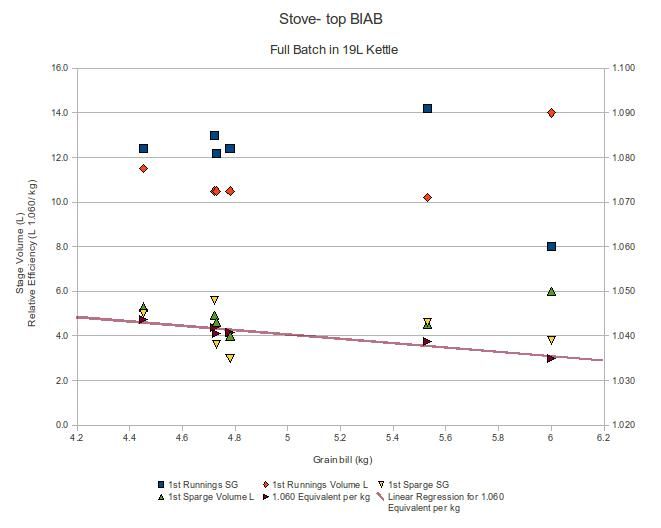Ok here we go –
Firstly thankyou to the creator of this spreadsheet – I take no credit for it, I’ve only mucked it around to suit my own needs.
What I’ve tried to do is track back the water volumes required for my system, to try and find how far I can push my set up, and “max it out”. You can fiddle with the variable numbers, and see what works for your system.
I’ve based this around my method, of my 40L URN which I use for the mash tun, and transfer to a 45L Kettle for boiling. (If the urn is used for the boil, you can just count both vessel volumes the same).
The sample data is for a final 43L “into cube“ volume (enough to fill 2 cubes with a 1048 wort) and it shows the breakdown of volumes and gravities at each point in the process (so I can see what I am meant to be hitting).
The system really only works to show you “top up” volumes at various stages in the brew day, and give you the gravities at each step, but what this allows you to do is keep more accurate measurements, know what you should be hitting, and hopefully see how far you can push your system. Oh and how much grain you should be using.
Cell Legend:
Green Shaded Cells: Variables that need to be entered to suit your system
Red Text: Recipe Targets. i.e desired volumes, and desired gravity.
This spreadsheet (and hence its purpose for me) works using Maximum mash volumes (potentially 40L from urn), and maximum boil volumes, because we want final volumes that are greater than our systems total volume. So I figure have these as full as possible at most times, and top up as required.
I understand you can just do this all at the end, or top up with any old amount and so on, but it helps me walk through, and plan my brew days ahead of time. I hope this has added useful information for you babbers out there, and not just more useless information! Feel free to add criticism, or if I am missing something all together!
I haven’t mucked around with the other pages, so I don’t know if what I have changed on this spreadsheet has upset them.
I’m happy I’ve nutted this out, I feel comfortable about doing double batches, and hitting the numbers I want along the way.
Cheers –
JD
The CalculatorMY SYSTEM1.1.xls
edit: pleae download/use the latest file (1.1) ABOVE
not the old one! my apologies for intern00b-ness!!
You do not have the required permissions to view the files attached to this post.
 Your Feedback and Questions on Using Maxi-BIAB on Mini-BIAB.
Your Feedback and Questions on Using Maxi-BIAB on Mini-BIAB.
